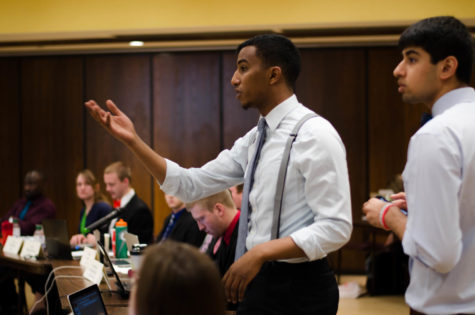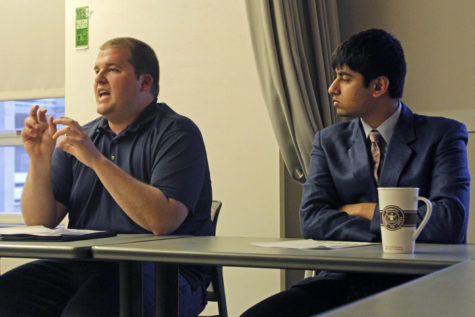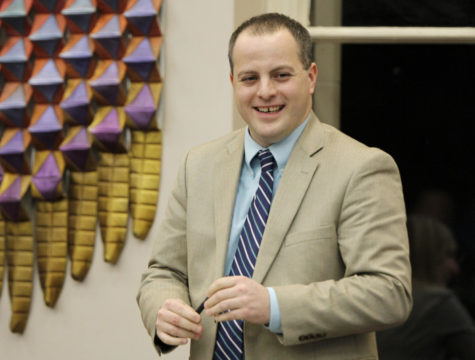TISINGER: Head ’em up, move ’em out
September 28, 2009
Lucas Moore, sophomore in history, might seem like your average ROTC student at Iowa State, but give him some baggy pants, facial makeup and stadium lights and he becomes something barely any of us can understand — a bullfighter.
The Cyclone Cultural Festival was held on September 19 on Central Campus. While the event probably wasn’t as publicized as it should have been, those who went learned a lot. Although it doesn’t seem obvious that Midwestern states can have culture, booths set up from 11 a.m.–3 p.m. showcased history, traditions and personalities; all of which are present on the ISU campus.
Moore is a perfect example of someone who lives one life containing many aspects. The culture of rodeo is present and very much alive here at Iowa State, but it is shoved into small pockets that are really only given enough thought by risk management or the Government of the Student Body.
“My bullfighting career actually began when I was five, and Westin Barnes painted me up like a clown and took me out into the arena during the mutton busting and I started ‘sheep fighting,’” Moore said. “It was pretty much from that moment on that I dreamed of being a professional bullfighter someday.”
Westin Barnes was Iowa State’s steer wrestler at the time.
Rodeo has been around since the early 1700s when ranchers would use these competitions to showcase their skills — the same way jousting did for medieval knights. Ranchers showed off their abilities at roping stray calves, tying up a goat and breaking horses to ride.
Eventually, “Wild West” shows would glorify these talents with exaggerations and the competitions became more of a performance rather than being based purely on skill. Buffalo Bill Cody, born near what is now Le Claire, was one of the greatest ambassadors of the Wild West show. These events have evolved into the contemporary showcases that will be held at the ISU Cyclone Stampede Rodeo on Saturday and Sunday.
“It’s out of control. There is no calling a timeout or convincing a bull to slack off and not hook you that night,” Moore said about these rodeo events. “It’s going to be wild. There’s really no other way to put it. Horses flying around at 30 to 35 mph, cowboys tying themselves to the backs of bucking bulls … you’re going to be entertained.”
Other ISU students agree and think it’s important for students to have a taste of a culture that has been overlooked for too long.
“It’s a great experience and you get to see all of the different events that go on,” said Katie Butler, senior in animal science and ISU Rodeo Club member. “You get to see how it evolved since the days when it was used on a daily basis at a ranch, when it was work instead of entertainment.”
The ISU Cyclone Stampede Rodeo is a rodeo event that has been held on campus for 47 years. It is part of the National Intercollegiate Rodeo Association (NIRA), and is host to 15 colleges and universities. Rodeos now have events in goat tying, steer wrestling, saddle bronc riding, bare bronc riding, team roping, barrel racing, calf roping, breakaway roping and, of course, bullriding.
“It’s captivating. You don’t have to be western to enjoy it,” said Liz Bialkowsky, junior in animal science and member of the ISU Rodeo Club. “It defines you as a person and shows the culture that you’re a part of,” Bialkowsky said. “I guess people give you weird looks because it’s not a very prominent lifestyle anymore.”
It’s important for students to understand the culture of rodeo and be open to learning about our university history, since not only is the Cyclone Stampede a long-running event, but also because it has gotten an outstanding amount of help from GSB.
Everyone is welcome to purchase a ticket and join ISU students, faculty, alumni and competitors in this age-old event. It’s bound to be a good show. After all, this ain’t our first rodeo.
– Sarah Tisinger is a junior in journalism and mass communication from Bettendorf, Iowa.









